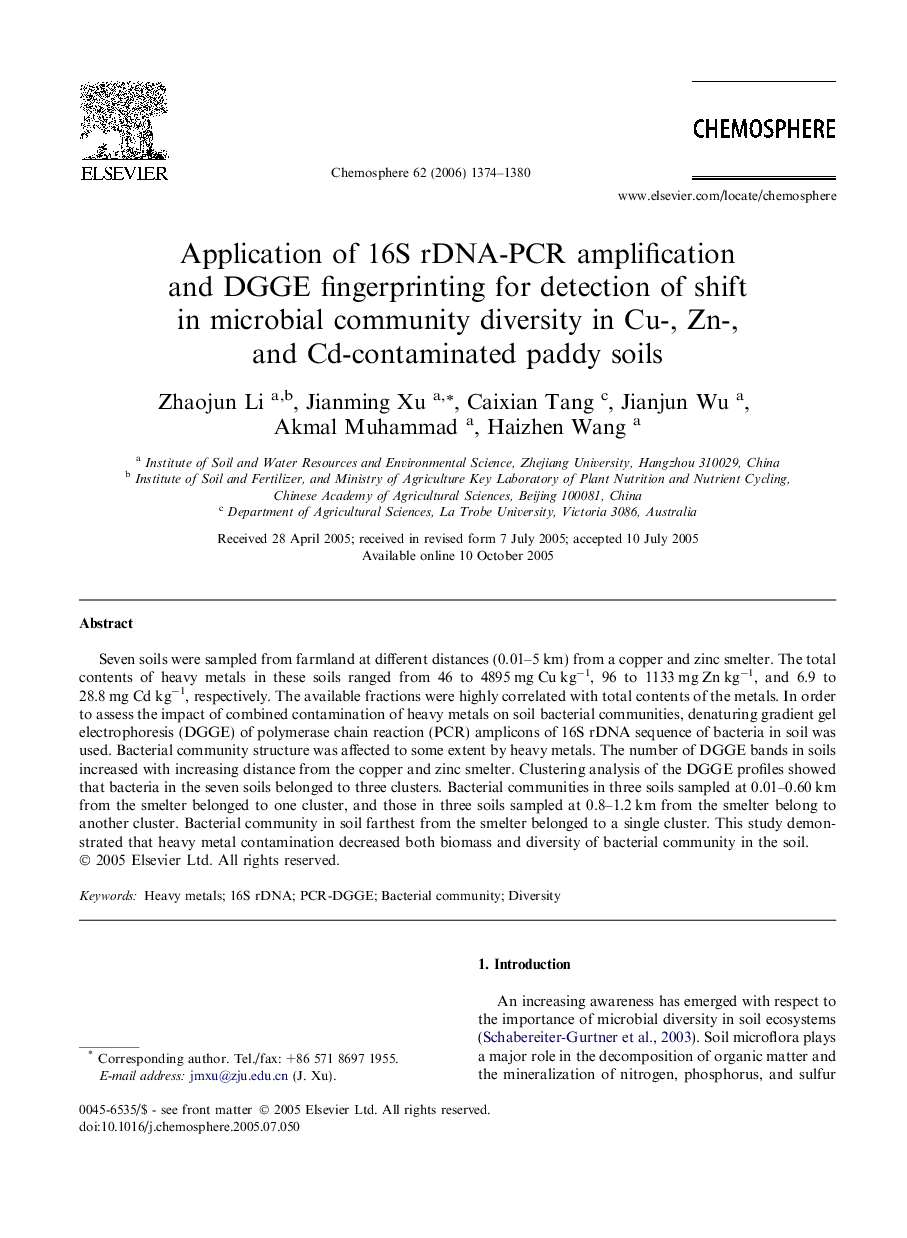| کد مقاله | کد نشریه | سال انتشار | مقاله انگلیسی | نسخه تمام متن |
|---|---|---|---|---|
| 4416125 | 1307769 | 2006 | 7 صفحه PDF | دانلود رایگان |

Seven soils were sampled from farmland at different distances (0.01–5 km) from a copper and zinc smelter. The total contents of heavy metals in these soils ranged from 46 to 4895 mg Cu kg−1, 96 to 1133 mg Zn kg−1, and 6.9 to 28.8 mg Cd kg−1, respectively. The available fractions were highly correlated with total contents of the metals. In order to assess the impact of combined contamination of heavy metals on soil bacterial communities, denaturing gradient gel electrophoresis (DGGE) of polymerase chain reaction (PCR) amplicons of 16S rDNA sequence of bacteria in soil was used. Bacterial community structure was affected to some extent by heavy metals. The number of DGGE bands in soils increased with increasing distance from the copper and zinc smelter. Clustering analysis of the DGGE profiles showed that bacteria in the seven soils belonged to three clusters. Bacterial communities in three soils sampled at 0.01–0.60 km from the smelter belonged to one cluster, and those in three soils sampled at 0.8–1.2 km from the smelter belong to another cluster. Bacterial community in soil farthest from the smelter belonged to a single cluster. This study demonstrated that heavy metal contamination decreased both biomass and diversity of bacterial community in the soil.
Journal: Chemosphere - Volume 62, Issue 8, March 2006, Pages 1374–1380